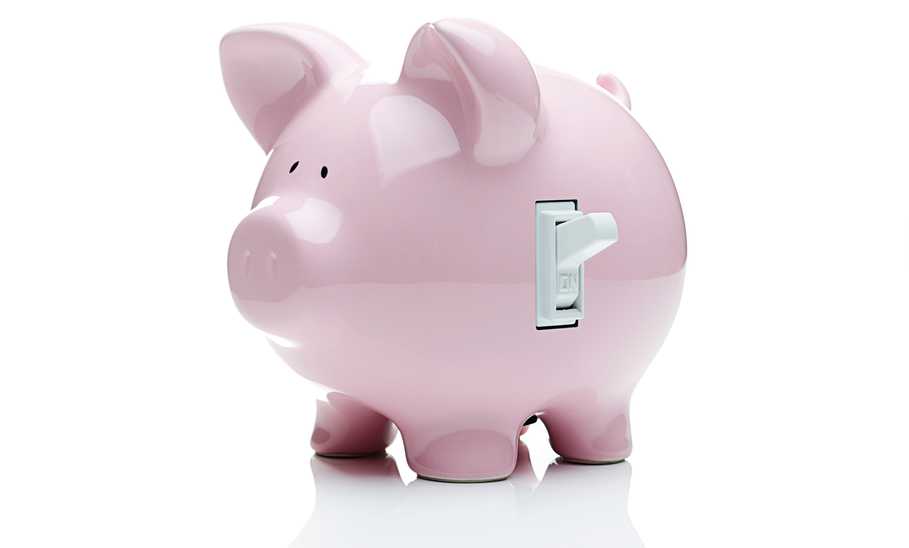How to Switch Banks

Our evaluations and opinions are not influenced by our advertising relationships, but we may earn a commission from our partners’ links. This content is created by TIME Stamped, under TIME’s direction and produced in accordance with TIME’s editorial guidelines and overseen by TIME’s editorial staff. Learn more about it.
You may have reached a point where you need to switch banks due to a long-distance move or a desire to get better interest rates on savings or lower fees on your checking account.
Switching to a new bank or credit union isn’t complicated if you follow an overlapping process that doesn’t leave you “bankless” during the transition. The best way to accomplish this is step by step.
Access your current checking, savings, money market, or CD accounts and list all transactions in and out of those accounts with particular attention paid to recurring transactions. The idea here is to know where your money goes regularly. While switching banks, you will want to ensure you change all of these transactions to your new accounts. Pay particular attention to the following:
List any online entities or apps that link to your current bank account. This could include credit cards, wallet apps, and online shopping sites. Remember to update your bank-account and debit-card information once your new account opens.
You may have set up your current accounts to alert you of transactions, including payments, withdrawals, deposits, and overdrafts. Or you may have a standing order to refill checks when your supply gets low. Cancel all these alerts to avoid email or text clutter, or purchases you don’t need to make.
Next, find your new bank (or banks). Remember that you don’t need to have all your accounts in one bank. The most often used bank accounts are checking, savings, money market, and CD. The table below shows several highly rated online and traditional banks, along with basic information about the accounts they offer.
| Bank | Type | States | Checking | Savings APY | Money Market Account | CD |
|---|---|---|---|---|---|---|
Chime | Online | 50 | No fees | No | No | |
CIT Bank | Online | 50 | No fees | |||
Chase Bank | Physical | 48 | 0.01% | Yes | Yes | |
Quontic | Online | 50 | ||||
Axos | Online | 50 | 0.61% | Yes | Yes | |
Live Oak | Online | 50 | No fees | No | Yes | |
First Citizens Bank | Physical | 21 | No fees | 0.03% | Yes | Yes |
Note, for example, that most banks offer no-fee checking accounts. Interest on savings ranges from tiny to impressive, and not all banks are full-service, meaning they may not necessarily offer money market accounts (MMAs), or CDs.
Online banks operating in all 50 states are increasingly popular, but if you prefer a traditional bank with physical branches, an online one is not for you. Many traditional banks also have an online presence.
If you choose a traditional bank it’s obviously important to know if that bank has a branch near where you live and that it operates in your state. Chase Bank, for example, has branches in all 48 continental U.S. states, but none in Alaska or Hawaii. You could also switch to a credit union, a non-profit financial institution that functions much like a bank.
Since there are so many options when it comes to bank offerings, you should compile a list of features you want. Here are some of the many features and benefits available at traditional and online banks and credit unions:
Something else to consider are minimum opening deposits or balance requirements per account type. Some banks have a zero required opening deposit and no minimum balance. Others only offer their best interest rates or features to those with a high balance.
Bonuses for opening a new account are another common feature. Typically these offers require you to spend or deposit so much within a given time frame. If your plans line up with requirements of the offer, it’s like getting free money.
Once you’ve selected a bank or banks, you can open your new account(s). Some traditional banks require you to visit a branch to open an account. Others, as well as online banks, let you do it from home on a computer or mobile app.
To open a new account, most banks and credit unions require the following information:
You will also need to fund your account. This can be done in person with cash or a check, and online using your current bank’s routing and account numbers. In some cases the new bank will make a test deposit into your current account to confirm the information you provided.
Now that your new account is open, you will need to transfer automatic deposits and payments so they can take place on time. Check your original list of transactions to make sure these are all accounts you want to keep open. Don’t forget to reset alerts and reminders in your new account(s). Switching to a new bank account provides a perfect opportunity to cancel subscriptions and streaming services you no longer want or need. Once this process is complete, update your account information.
Keep some money in your old account until you are certain all pending transactions have taken place. If you’re not sure, wait a bit longer. Most experts recommend waiting at least one full billing cycle for each transaction account.
Once you are certain that all automatic recurring transactions have transferred to your new bank account and been activated from there, it’s time to close your account at your old bank. Your bank’s policy will determine whether you need to do this in person, over the phone, or online.
Get and retain written verification that the account is closed in case your old bank accidentally processes a deposit or other transaction after the account was confirmed closed. Check with your old bank to see if you owe any fee for closing your account. This should only apply if you open and close an account too soon according to the terms of the account.
Shred any remaining paper checks, your old bank debit cards or ATM cards that could be used to try to access your account. Retain statements and other paperwork for at least a year in case you need these records to verify anything from your old account such as lingering payments or deposits.
Read and re-read the terms of your new bank account. There will likely be features you didn’t have at your old bank that you will want to take advantage of with your new account. The ability to track savings goals, interest rates, even spending by category may be available with your new account at no charge to you. Take advantage of any and all tools that will help you remain financially solvent.
Lastly, check to make sure every single deposit and transaction has gone through at least one complete cycle. Even if your finances are not particularly complicated, it’s easy to overlook a deposit or payment only to get hit with a late payment charge or discover a missing deposit that wreaks havoc with your careful planning.
The research you conduct before deciding on a new bank will take the most time. Once you’ve decided where to put your money, opening a new account can be done almost instantly. Opening an account in person at a bank will take longer than opening one online.
Keep your old bank account open at least a month if you still have deposits and payments cycling through. In the meantime, even though your old account may still be open, your primary focus should be on making sure the new account is functioning properly. This could take a month as wel—longer if there are problems, less time if all goes smoothly.
Even if you are moving to another state, you may not have to switch banks, especially if your current account is with an online bank or a large national brick-and-mortar bank. If you have a traditional account and want the same services in your new location, switching to a new bank may be necessary.
If you just want to see what’s available and whether you could improve on interest rates and lower fees, it doesn’t matter whether you relocate or not. Before you make a switch, however, there are some things to consider:
When you close one bank account and open another, the transition period can result in lost deposits, missed payments, overdraft fees, and lots of stress. To avoid all of that, follow the steps listed above and make sure you carefully monitor your accounts at both banks during the transition.
If you are moving and don’t have to switch right away, wait until the move is complete to make the actual switch. This will avoid misplaced paperwork, rushing, and distractions that might result in missed payments or lost deposits.
Your new bank may have a “switch kit” that makes it especially easy to move your money from one bank to another. Ask or search online for guidance. If you are switching to a traditional bank, speak with a bank employee in person or over the phone about steps you need to take and how your new bank can help.
Switching bank accounts involves careful planning and timing to avoid missteps that could cause you to miss payments or lose track of financial transactions. Whether switching to save money or because a long-distance move makes it necessary, knowing what to expect is essential before taking action.
Compare banks carefully to make sure the one you choose meets your needs as well as or better than the bank you are leaving. The better you understand the process, the less opportunity there will be for a costly error and the less overwhelmed you will feel.
Closing one bank account and opening a new one doesn’t typically affect your credit score because credit reports do not include information about bank accounts. If your bank reports a negative balance to a collection agency, that could hurt your credit rating. So could having a loan or line of credit with a bank that reports that you have late or missing payments.
While most banks will let you switch banks if you have a loan, it’s important to carefully read the terms agreement you signed when you took out the loan. Switching banks may result in a higher interest rate or fees. If so, you may want to keep your old bank account open until you pay off the loan or refinance it at your new bank.
The answer to this question will depend on several factors. Does your old bank have branches in your new location? If not—and you want to do business with a brick-and-mortar institution—a switch might be your best move.
If you decide to switch to an online bank, that’s another reason to change. On the other hand, if your current bank is online or a brick-and-mortar bank with local branches, there may be no need to switch unless you find somewhere with lower fees or a higher interest rate on savings.
The information presented here is created by TIME Stamped and overseen by TIME editorial staff. To learn more, see our About Us page.



